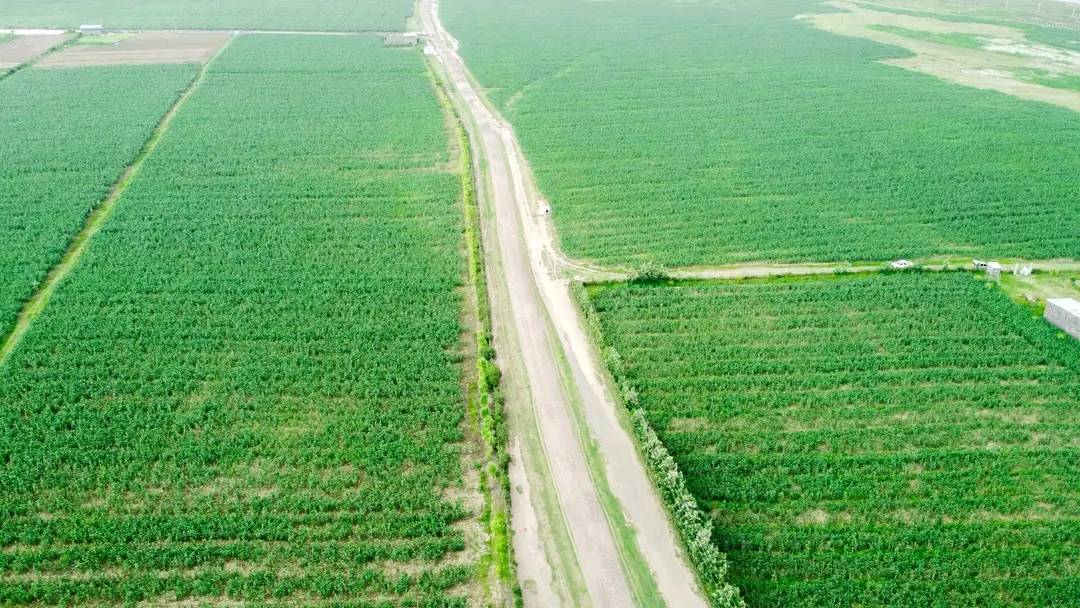Ethiopia’s Path to Agricultural Resilience in a Changing Climate - ENA English
Ethiopia’s Path to Agricultural Resilience in a Changing Climate

By Zelalem Yibeltal
Addis Ababa, July, 24, 2025 (ENA)—Gadi Muga, a resilient resident of Hamer Woreda in Ethiopia’s Southern region, once faced relentless adversity as her livelihood was battered by extreme climate shocks — from devastating floods to prolonged droughts. At one point, she could not produce enough food to feed her family. It was a time marked by deep uncertainty, where survival overshadowed any hope of envisioning the future.
Gadi recalls those difficult days, saying, 'Our rain-fed agriculture never produced the yields we depended on. And when the floods kept returning, they crushed any hope we had left for our farming future.
Gadi’s experience reflects the harsh reality faced by countless pastoralists in her village, where years of erratic rainfall and repeated flooding have rendered agriculture increasingly unreliable and unsustainable.
Beyond Gadi's village, countless farmers across Ethiopia have also felt the brunt of climate-induced challenges, with their livelihoods severely disrupted by shifting weather patterns and environmental extremes.
In response to the severe climate challenges facing Ethiopia’s agriculture sector, the government — under the leadership of Prime Minister Abiy Ahmed — has, over the past six years, steadfastly championed a climate-resilient farming agenda to protect livelihoods and secure long-term food stability. Central to this effort has been the rapid expansion of irrigation infrastructure, led by both the government and farmers, as a strategic shift away from the vulnerabilities of rain-fed agriculture.
Indeed, farmers like Gadi have emerged as powerful voices championing the expansion of irrigation infrastructure, recognizing it as essential to withstanding the growing threat of climate shocks.
A shining example of this effort is the Kuma Irrigation Project, situated near Gadi’s village. As an active participant, Gadi speaks passionately about the project’s transformative impact on her life and community.
“We persistently called for irrigation, and the government finally answered. Thanks to the Kuma Irrigation Project, we’ve broken free from traditional farming methods.
Through cluster farming, we now harvest three times a year. Our productivity has soared, we’re growing cash crops, and we've begun to move beyond mere subsistence toward real economic empowerment, ” she said.
Ekale Nater, is Head of the Irrigation and Lowlands Development Bureau for the South Ethiopia Region. For him, Kuma is just one part of a broader movement. He explained there are approximately 238 small- and medium-scale irrigation projects in the region, and around 32,000 hectares of land have been developed.
Currently, Ethiopia is rapidly positioning itself as a continental frontrunner in climate resilience, with a bold focus on transforming its agriculture sector, long one of the most vulnerable to environmental shocks.
As a cornerstone of the national economy and a major contributor to GDP, agriculture is now at the heart of the country’s climate strategy, with the government making maximum efforts to turn it into a model of sustainability, productivity, and adaptive strength.
According to Chief Advisor to the Minister of Agriculture, Dr. Getachew Diriba, Ethiopia’s long-standing reliance on rain-fed agriculture has left farmers acutely vulnerable to climate extremes — including floods, erratic rainfall, and prolonged droughts.
“The impacts of climate change persist,” he acknowledged, “but significant strides have been made to shift the trajectory toward greater resilience and sustainability.”
On his part, UN Food Systems Senior Program Coordinator, Dr. Khalid Eltaweel, underscored that despite Ethiopia’s minimal contribution to global climate change, the effects of a warming planet are clearly visible in the country’s agricultural output.
“Ethiopia bears the brunt of climate change despite contributing little to its cause,” he remarked.
Ethiopia's Minister of Agriculture, Dr. Girma Amente, emphasized the government’s commitment to climate-resilient farming. A key strategy has been shifting to irrigated agriculture, especially for staple crops like wheat.
“Just two or three years ago, Ethiopia imported 1 million metric tons of wheat, costing nearly 1 billion US dollars. Today, we’ve reversed that path and met domestic wheat demand,” Girma revealed.
The country has produced surplus wheat in recent years, a milestone that led to Prime Minister Abiy Ahmed receiving the prestigious Agricola Award from the UN Food and Agriculture Organization.
Modernization efforts have extended to Ethiopia's pioneering cluster farming initiative. “Farmers are now cultivating over 10 million hectares through cluster farming,” said Dr. Getachew. “Fifteen million farmers are engaged, and the use of mechanization—tractors and combine harvesters—has tripled or quadrupled in the past five years. These changes have significantly boosted both production and productivity.”
Dr. Eltaweel praised Ethiopia’s approach to integrating climate risk and vulnerability modeling across sectors. The country has adopted digital platforms for farmers, GIS tools, early warning systems, and climate-smart agricultural practices including livestock insurance and water infrastructure for pastoralist communities.
Ethiopia’s commitment to afforestation is epitomized by the Green Legacy Initiative, which has gained global recognition. “Forest coverage has grown from 16.2% to 23.6% in just four years,” said Dr. Getachew. “This is a monumental achievement.”
UN Assistant Secretary-General Ramiz Alakbarov echoed the sentiment, calling the initiative one of the largest environmental efforts in the world. “I’ve never seen any other country plant billions of trees,” he remarked.
Recognizing that climate change is a global challenge, Ethiopia remains actively engaged with international partners. Dr. Eltaweel noted that UN agencies are assisting Ethiopia in accessing climate finance through the Green Climate Fund, Joint SDG Fund, and public-private partnerships.
The country is also exploring green bonds and microfinance solutions. He said, “Ethiopia is a good example of sound international cooperation.” From the Paris Agreement to African regional frameworks, Ethiopia stands out as a model of effective collaboration.